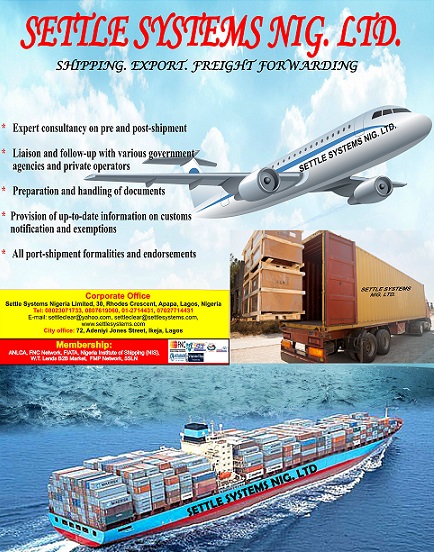Customs Report
Customs Introduce New Scanning System

Sensitizes stakeholders’ on processes, capabilities
BY EGUONO ODJEGBA
The Nigeria Customs Service, NCS, has announced the introduction of a new cargo scanning system designed to aid trade facilitation and service delivery, while ensuring national security.

Col. Ali, Customs boss
Sensitizing stakeholders on the processes and standard operating procedure, SOP, of the new scanning system which the Customs explained is a non intrusive inspection version and an upgrade of the existing system that eliminates human contact and has the capacity to scan 400 containers a day.
The new system dubbed Nigeria Customs Service Non Intrusive Inspection, NII, Standard Operating Procedure, SOP, is driven by high precision image capturing and analysis capacity.
During the stakeholders engagement which took place at the conference room of the Apapa Area Command of the Service yesterday, Thursday, where stakeholders were taken through the operating procedure, the Deputy Comptroller General in charge of Modernization & ICT, Saidu Galadima said under the new system, it will take an average of 35seconds to scan a container, and two to three minutes to analyze the scanned image.
Officer in charge of the new system, Deputy Comptroller Paul Ekpeyong in his presentation provided a graphic pictorial demonstration of the scanning process.
He explains that as soon as a vessel berths, the terminal operator picks containers to the scanning site where the containers are scanned, while the content images are stored, including the containers numbers, truck numbers etc.
The images are thereafter warehoused, to serve as a data base in the event that issues are discovered after the release of any container, the affected container can be easily traced.
According to him, in line with the SOP, the shipping companies and terminal operators are in umbilical interface with the NCS, Declarants, NICID 11 Risk Engine, Image Analyst, NCS Control, Terminal Operators, Recheck Officers and Scanner Managers, who he said are all engineered and integrated into the system.
He said the operation is such that once declarations are made, assessments are generated and payments made without delays.

Bomodi, Customs spokesman
Once payment has been made, selectivity is triggered and containers are allocated for scanning and image analysis.
Ekpeyong explained that the next stage is interpretation of the scanned containers to determine their compliance status.
While compliant containers hit a green button in the analysis machine, the non compliant containers hits a red lane.
The first is digitally marked Non Suspect, while the non compliant containers are marked Suspect.
While both the Non Suspect and Suspect containers are referred to the Scanner Manager, the suspect container is returned to the terminal where the owners or agents are informed, and arrangement is made to repeat the process.
However, the container owners, Ekpeyong said are obliged to discuss and settle with the terminal operators in respect of the accruing demurrage.
Nevertheless, Galadima explained that suspect containers will be made to go through physical examination, and if discrepancies are discovered, a debit note, DN, will be issued.
Upon payment of the DN the container will be released, and advised importers and their agents to espouse compliance in order to enjoy official trust, cost efficiency and trade facilitation.
He warned that the risk engine is constantly profiling non compliant traders and such will impact negatively on not only cost but trade character of those concerned, who by their own actions may not be able to enjoy official goodwill and confidence in the trade corridor.
Present at the one-day sensitization programme were shipping companies, terminal operators, bonded terminals, agents and importers.

























